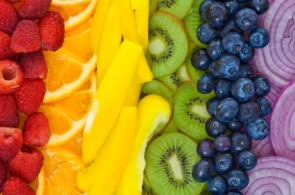 The Food and Drug Administration determined many years ago that there was no definitive link between artificial food colorings and health problems in children or adults. However, it recently decided to review the evidence and consider possible policy changes that include placing warning labels on food containing the artificial colorings.
The Food and Drug Administration determined many years ago that there was no definitive link between artificial food colorings and health problems in children or adults. However, it recently decided to review the evidence and consider possible policy changes that include placing warning labels on food containing the artificial colorings.
Dr. Jeffrey A. Morrison, MD, author of Cleanse Your Body, Clear Your Mind has studied the links between toxins and chemicals in our food and environment to health and behavior. He advises his patients to avoid all artificial colorings and food dyes whenever possible.
“Artificial food colorings and dyes have been used for many years but only recently have they been under investigation with the FDA,” Morrison said. “In particular, red dyes have been known to cause hyperactivity and gastrointestinal discomfort in children and adults.”
According to Morrison, artificial food colorings do not enhance the flavor or nutritional profile of food, but are used primarily to enhance a food’s aesthetic appearance and, sometimes, make it more appealing to children. However, many companies, as well as home cooks, have discovered some natural food dyes that can enhance a food’s appearance – and it’s taste.
Red Berry Purees: Instead of Red 40, which is suspected to cause hyperactivity and behavioral problems, it’s possible to create red or pink food colorings with pureed raspberries, cherries or strawberries. You can use berries to flavor whipped cream, vanilla cake or other sweet items. Just keep in mind that your food will have a mild berry flavor, so this might not work for something savory.
 Blueberries: Though they sometimes require a little more effort than other items, crushed, pureed and strained blueberries can give foods a blue tint. While the color won’t be as bright as the blues in artificial food dyes, you’ll know it’s safer for your body.
Blueberries: Though they sometimes require a little more effort than other items, crushed, pureed and strained blueberries can give foods a blue tint. While the color won’t be as bright as the blues in artificial food dyes, you’ll know it’s safer for your body.
Avocado: To achieve a green cake or frosting for a birthday or holiday, try pureed avocado, which has a mild taste that can be hidden by sugar and other ingredients. Plus, it can make baked goods taste dense and moist without adding calories or saturated fats.
Sweet potatoes or Pumpkin: Though fresh pumpkin is typically only available from August through December, these hearty, vitamin A rich vegetables are both mild flavored and full of nutrients. They’ll add a nice, deep orange color to your favorite foods – and won’t stain your hands like most artificially dyed cheese flavored chips.
Turmeric: To add a natural coloring to foods, look to your spice cabinet. Add a bit of powdered turmeric to hot water until it forms a paste and mix the paste in to add a deep yellow or golden color to foods.
